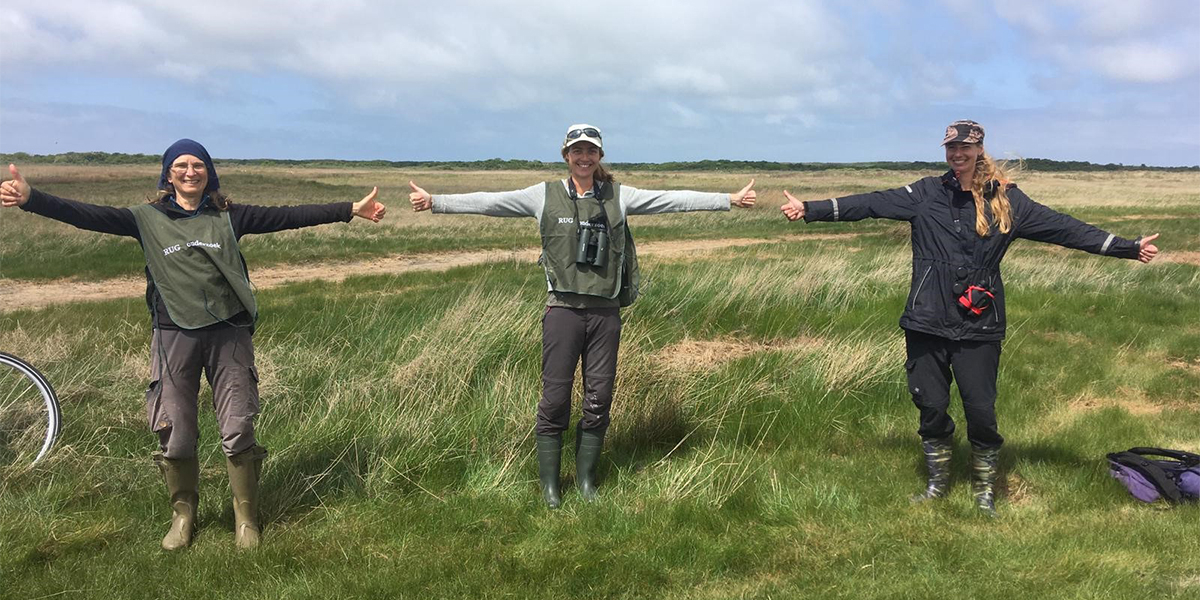
Wednesday 16 September 2020 | Nadia took off!
Two days ago (14 September) around 19:00, Nadia departed from De Onlanden to fly more than 1000 km in less than 36 hours. She travelled mainly during the night, taking a decent (13 hour) rest on 15 September during daytime, along the coast of Normandy. After another night of migration, she arrived in the Loire estuary near Nantes in the early morning.
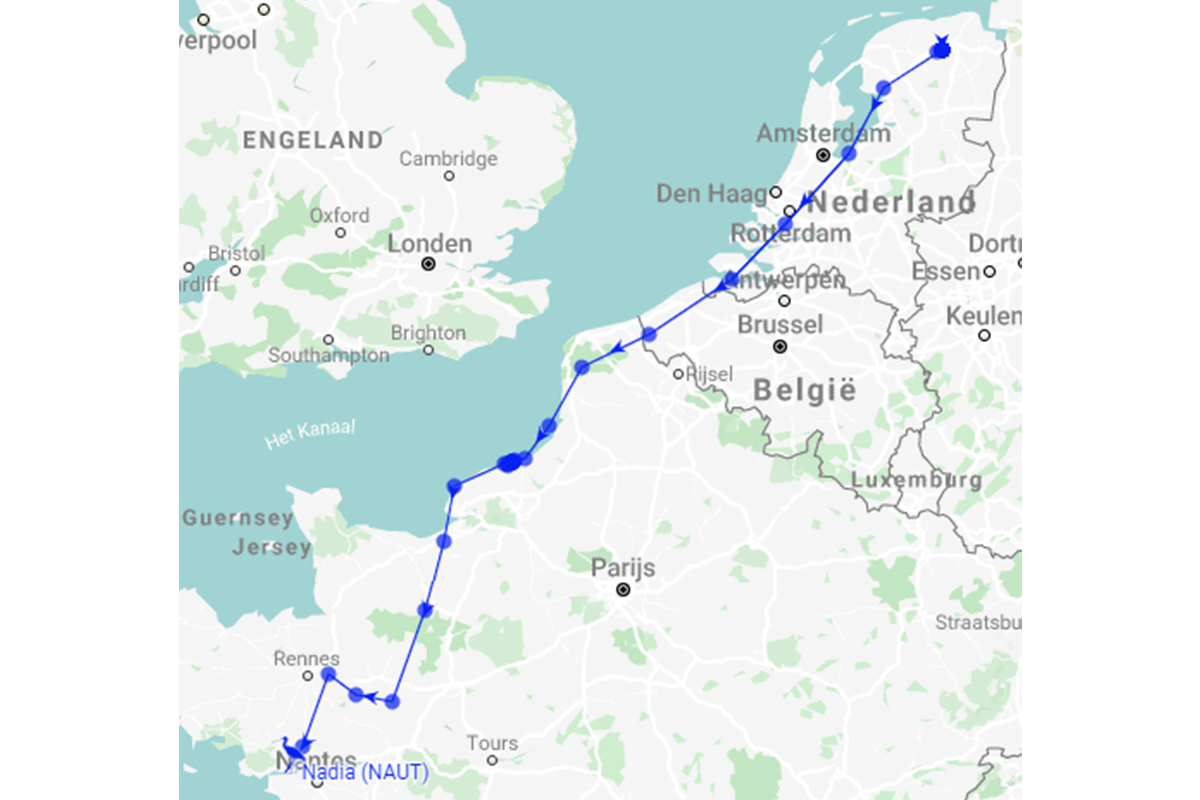
She was the only one (of the six juveniles that are tracked this year) that went to De Onlanden, a recently established nature reserve that serves as water storage area for Groningen city. Nadia arrived there on 6 August and stayed for 6 weeks to prepare for her first southward migration. Two weeks ago, I went searching for her and discovered that she was in good company, standing in a group of 76 spoonbills, of which the majority was adult (69). One of the adults was her father, who could be recognized from his colour-rings. Her mother was not ringed, so we don’t know if she may have been there as well.
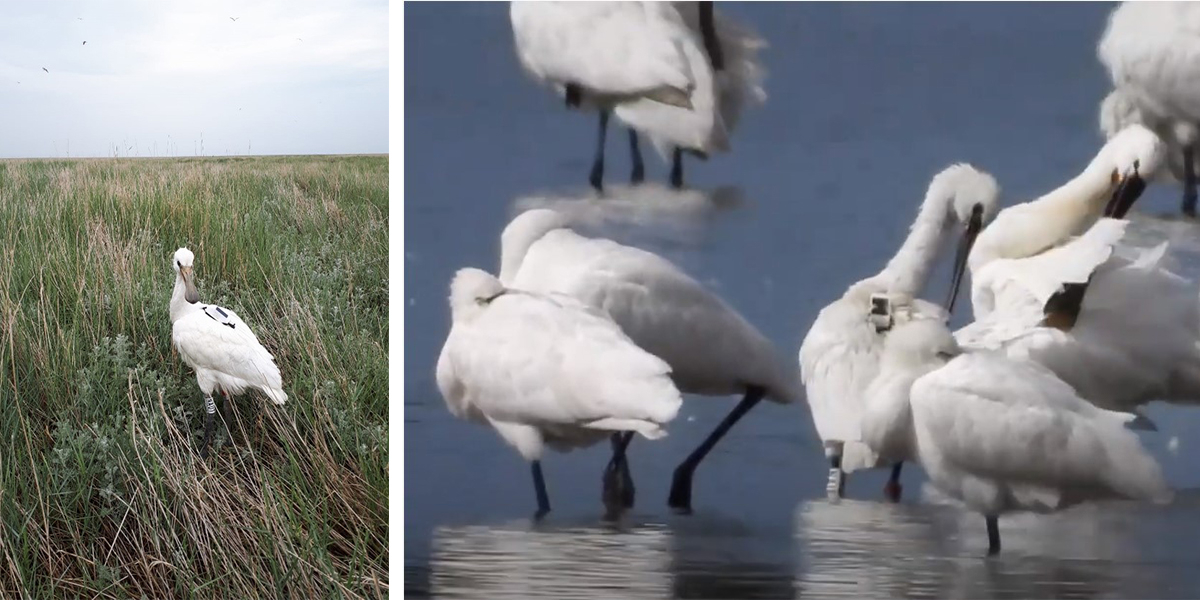
René Oosterhuis, nature manager at Groninger Landschap, keeps a close eye at the spoonbills in De Onlanden. Since 2017 he regularly performs counts and reads the colour-rings of the spoonbills. This allowed him to estimate the number of spoonbills using the area during (late) summer. This number is increasing over the years, from 188 in 2017 to 310 in 2019. On the basis of René’s regular readings of colour-ringed individuals, he could nicely show that most spoonbills come from the breeding colony on Schiermonnikoog and stay for several weeks to months in the area (Oosterhuis 2018).
So did Nadia. Nadia most likely found this place by following her father. René observed that she was still fed by her father on 11 September, 3 days before she departed! Another bird watcher made a beautiful video of Nadia preening herself extensively, four days prior to her departure. De Onlanden has lots of shallow water bodies with quite large fish (at least for a spoonbill’s bill) living there. René took a nice shot of an adult spoonbill catching and swallowing such a big fish. It thus looks like a perfect place for preparing for migration and it may not be a coincidence that Nadia was the first to depart of the six juveniles that are tracked this year. She even migrated before her father, who was still present (as confirmed by René) in De Onlanden on 15 September.
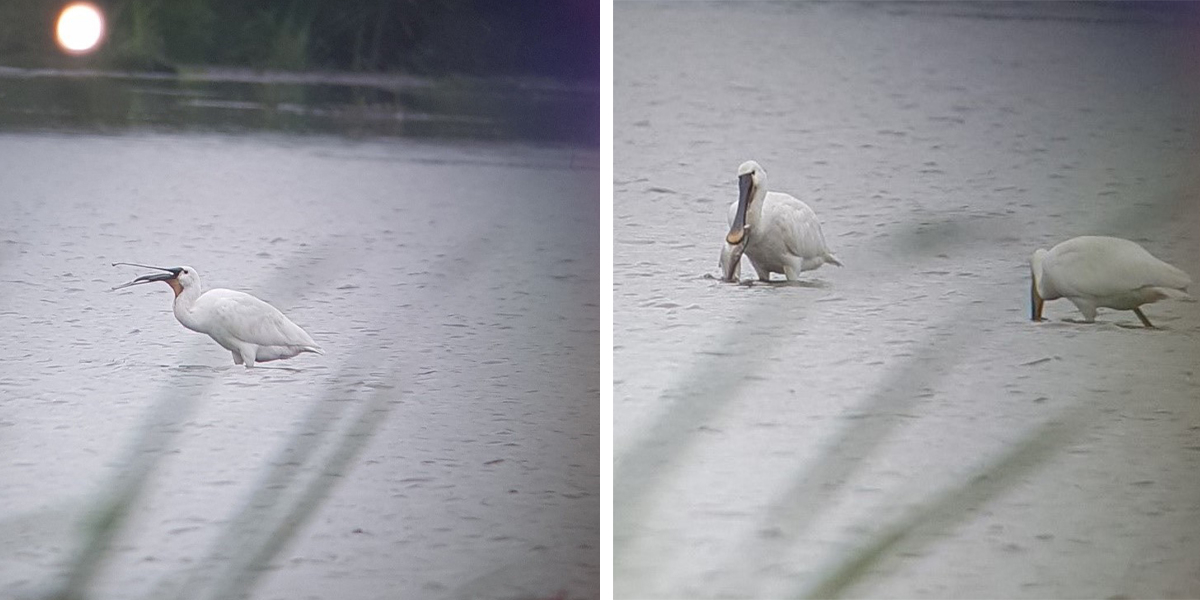
Reference
Oosterhuis, R. (2018) Van toevallige passant naar vaste bewoner; Lepelaars Platalea leucorodia in De Onlanden. Drentse Vogels 32, pp. 32-38.
BLOG 28 August 2020 | Meet the new juveniles
In June 2020, shortly after the corona-restriction of working with maximally 3 persons in the field was relaxed to 10 persons, we managed to equip 6 juvenile spoonbills on Schiermonnikoog and 1 in the Camargue with a GPS-GSM tracker.
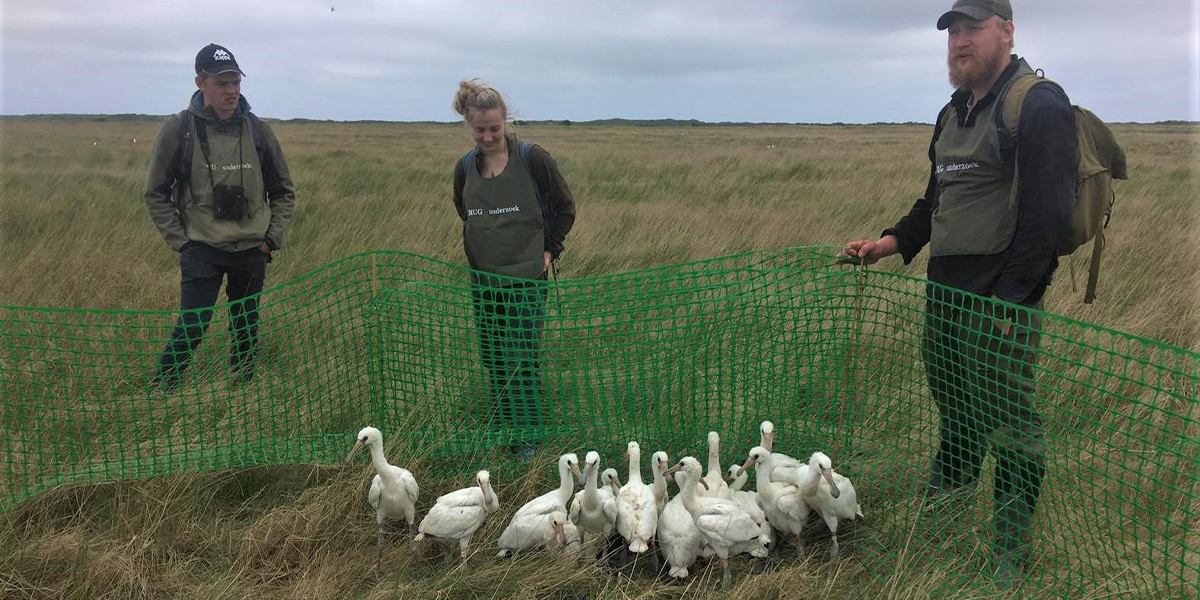
Four of the six tracked young spoonbills from Schiermonnikoog came from the same colony: Claire, Wilko, Maya and Amir. Nadia and Ilse came from two different colonies. Currently, the four individuals from the same colony are all hanging around along the Groninger coast, whereas Nadia and Ilse are at quite different places: Nadia is currently next to the Leekstermeer and Ilse is still on Schiermonnikoog. Is it a coincidence that the four individuals from the same colony are all close to each other, or are they still socially “bonded”, as they were born in the same colony? If we take a close look at the tracks of these four birds over the past week, it seems that Maya and Amir are pairing up, as are Claire and Wilko. It will be very interesting to see if they keep this apparent social connection when they depart on migration.
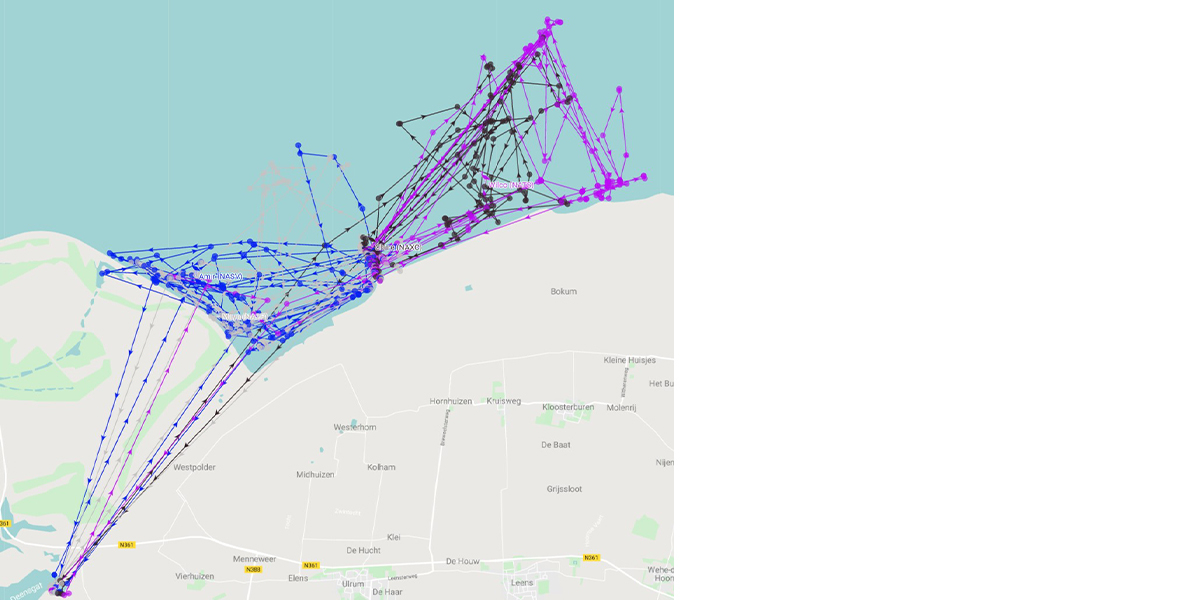
It is these social connections that we are particularly interested in, as we expect that social learning plays an important role in shaping the migration routes of juvenile spoonbills. But of course, juvenile spoonbills can only learn suitable migration routes from adults, not from inexperienced juveniles. Therefore, we are particularly interested in knowing whether our GPS-tracked juveniles are also accompanied by adults, and if possible, which adults. About 10% of the spoonbills is individually recognizable, as they received a unique combination of color-rings as a chick.
On 24 July, Petra de Goeij and Sven Prins visited the Groninger coast and spotted Claire in a group of 183 spoonbills (see photo below). Last Friday, Petra visited the area again, and then there were 400 spoonbills present!
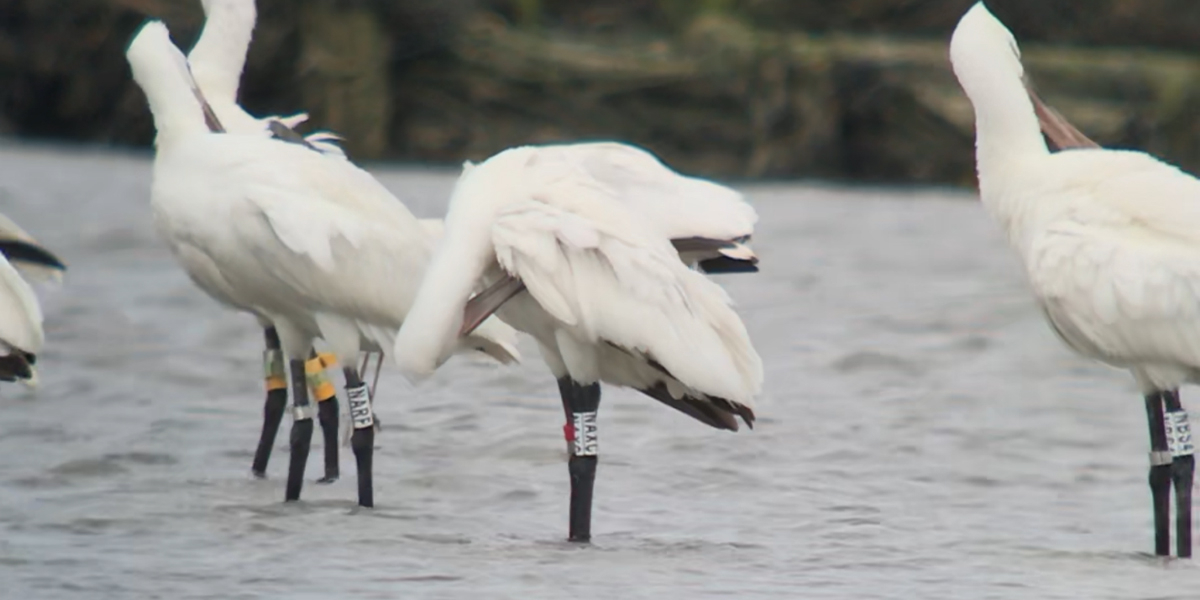
Observation of Claire (with inscription NAXC), preening herself at the Groninger coast, by Sven Prins and Petra de Goeij (photo: Sven Prins), on 24 July 2020. At that time, Claire was in close company of – at least – four other juveniles (recognized by their black wingtips) and one adult. Two juveniles and the adult were ringed (NARF, NBS4, YfLY/aLY). Both juveniles were born on Schiermonnikoog, and NARF was from the same colony as Claire, but NBS4 was not. YfLY/aLY is an adult female that also has a transmitter, her name is Sinagote. She breeds on Vlieland, but always visits the Groninger coast after the breeding season, before heading south to her wintering site in Bretagne.
The migration season of the spoonbills has already started and in the coming month, most of the spoonbills will be heading southward. Spoonbills usually do not migrate in one go to their winter destination, but make multiple stops. Many of the birds departing from the Wadden Sea area make their first stop in the Dutch Delta.
If you happen to encounter one our GPS-tracked birds on their way south (along with the white inscription ring, these GPS-tracked individuals have a red ring on the other leg, to facilitate tracing them in the field), then you can help our research by collecting valuable data. Please go to ‘We need your help’ to read what information we are particularly interested in and how you can send this information to us.